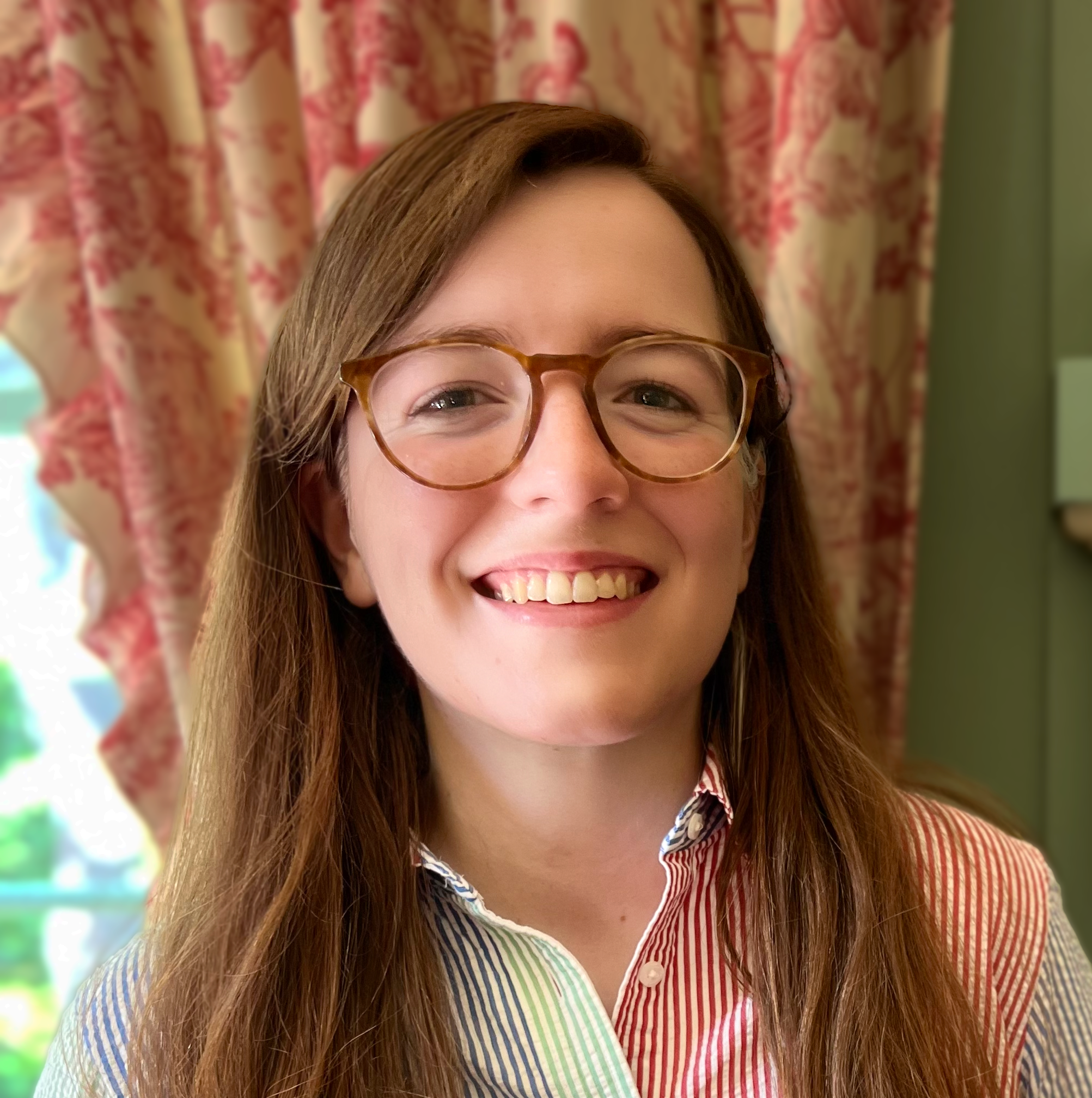The HIV/AIDS Epidemic and Public Broadcasting
Public Broadcasting Covers the HIV/AIDS Pandemic in Africa
Following the decline in the number of new AIDS cases in the United States and the development of effective treatments, case numbers rose exponentially across several countries in sub-Saharan Africa, altering the geopolitical landscape of foreign aid and the Western world’s view of the continent. This section of the exhibit illustrates how public broadcasting covered the humanitarian efforts of the United States and international organizations and the effect of HIV/AIDS on the culture and economic development of various African countries.
Although the presence of AIDS in Africa was discovered as early as 1983, its magnitude and severity were not recognized until much later due to fears of stigmatization and economic consequences.90 Unlike in the U.S., where most AIDS patients in the 1980s were gay men, African countries saw high rates of heterosexual and mother-to-child transmission. The pandemic left millions of African children orphaned as communities struggled to implement sustainable treatment and prevention measures. Much of this responsibility has fallen onto nongovernmental organizations.
Humanitarian efforts by the U.S. including sexual education, the donation of antiretroviral drugs (ARVs), and monetary investments have succeeded in decreasing the number of cases and lowering mortality rates, but factors like gender dynamics and lack of infrastructure to administer treatments have led to periodic setbacks.91 Additionally, U.S. foreign policy interests in Africa continue to shift, and the question remains of whether the U.S. will stay committed to solving the AIDS pandemic in Africa, especially given other global events competing for its resources and attention. Today, while having AIDS may no longer be as stigmatized for gay men in the U.S. as it was in the 1980s, the disease has become associated with impoverished African countries and their inability to address the issue.
An American perspective has dominated coverage of the AIDS pandemic in Africa. Scholar Susan Moeller, writing in a Neiman Foundation publication about the coverage of AIDS in Africa by the U.S. media in general, states, “Stories drew connections between the African victims of the virus and American sufferers.”92 In addition, many news segments covering AIDS in Africa focused on strategies of world leaders to curb its spread. Much of the conversation in these reports concerned funding, because although ARVs were readily available in developed countries, the majority of Africans living with AIDS could not afford them. Providing humanitarian assistance to African countries held implications for U.S. foreign policy not only in terms of the resources needed to form plans, allocate funds, and distribute treatments, but regarding the long-term commitment to sustaining monetary aid as well.
As we have seen, when AIDS emerged as a health crisis in the U.S., the media did not prioritize it because it mainly affected gay men. This type of apathy for marginalized populations was compounded when AIDS became a pandemic in Africa. Quoting an account by Washington Post reporter Barton Gellman on the delayed international reaction to AIDS in Africa, Moeller wrote, “Racism led to inattention when AIDS was perceived as being ‘no longer a threat to the West.’”93 There was the concern that the American public would experience “AIDS fatigue”94 if the media continued to cover the pandemic frequently. In Africa, there were no high-profile patients like Rock Hudson, Magic Johnson, or Freddie Mercury, who could grab the attention of a Western audience if they fell ill. As a result, the media felt less pressure to cover AIDS in Africa rather than other major news stories of the time in which the U.S. arguably had greater national security interests.
Obstacles to covering AIDS nationally and globally were markedly different. In the U.S., homophobia played a significant role in the way AIDS was portrayed in the media, including public broadcasting, while this was not the case in Africa. News segments about Africa focused on the culture and infrastructure of various African countries, encouraging Americans to care about the issue and educate themselves about the gravity of the pandemic. Public broadcasting covered the AIDS pandemic in Africa in three main ways. First, the programs gave voice to leaders from the international community who commented on the situation during various international conferences. Second, public broadcasting often relied on professionals from the medical field to explain the scale of the pandemic and the scientific possibilities of prevention and treatment. And third, correspondents in African countries documented communities suffering from the effects of AIDS in attempts to spread awareness or garner sympathy.
1980s - 1990s: Beginning to Cover AIDS in Africa
The response to AIDS in Africa was slow. A New York Times article from November 1985 reported, “The disease is clearly a more important public health problem than many African governments acknowledge…. Some African countries have refused visas to journalists inquiring about AIDS.”95 Though public broadcasting in the 1980s still mainly focused on the epidemic in the U.S., The MacNeil/Lehrer NewsHour aired one segment in December 1985, about the AIDS pandemic in Africa, focusing on Rwanda and Kenya, after the World Health Organization (WHO) announced a new strategy to combat the disease. In the piece, reporter James Withington from Thames Television discussed the Kenyan government’s unwillingness to inform the public about AIDS. “The government, perhaps understandably, takes the view that they don't want to stir up panic about the disease,” he stated. “The danger of their approach, though, is that it may keep in the dark the very people whose behavior could contribute to the spread of AIDS.”
The WHO first designated December 1 as World AIDS Day in 1988.96 From this period onward, several segments with official updates on AIDS aired each year on or around December 1, usually introduced by a graphic with the red ribbon symbolizing AIDS awareness, adopted in 1991.97 Coverage of the pandemic in Africa by American public broadcasting increased throughout the 1990s, in part due to estimations of case numbers from sources like the WHO rather than from African governments reporting numbers themselves.98
Like World AIDS Day, the International AIDS Conference, begun in 1985 and held biennially since 1994, became an occasion for public broadcasting to air reports on the pandemic. In 1991, The MacNeil/Lehrer NewsHour covered the seventh International AIDS Conference and gave updates on AIDS in Africa, where at the time, an estimated six million adults and 500,000 infants were infected, and in Asia, where high infection rates among prostitutes in cities caused alarm. The broadcast included reports filmed in Uganda and Thailand. On World AIDS Day in 1992, The MacNeil/Lehrer NewsHour aired another report about AIDS in Uganda, where in some areas 30 percent of the population were HIV positive with figures doubling annually. Discussion centered on the just-released major report “AIDS in the World,” put out by the Global AIDS Policy Coalition.
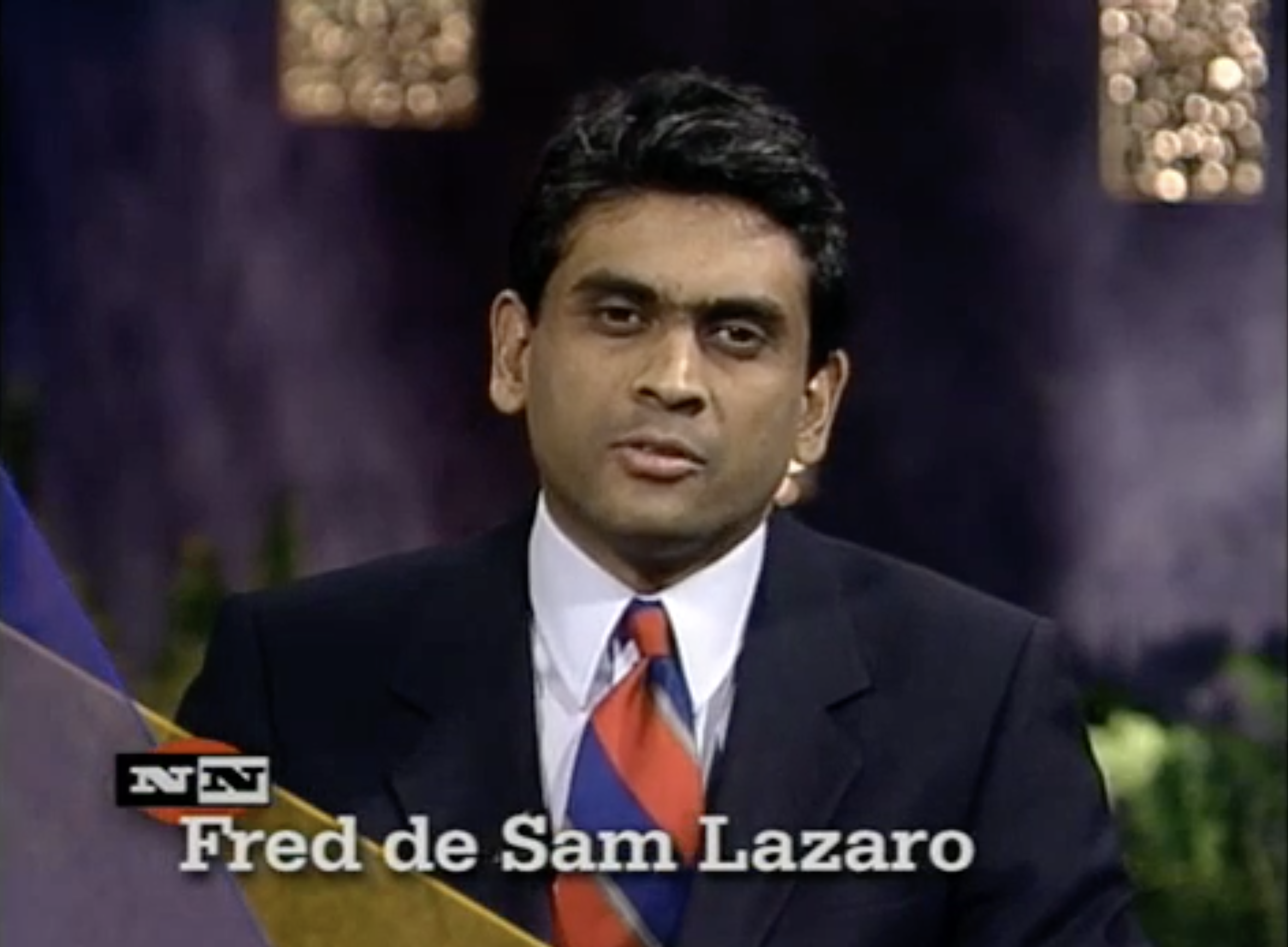 |
Public broadcasting covered AIDS through both country-specific segments and broader reports, highlighting the similarities and differences between African countries and the resources available to them, including the capacity of their healthcare systems. Journalist Fred de Sam Lazaro covered AIDS in Uganda in a 1995 segment for NewsNight Minnesota, and in 1998, two versions of his report on AIDS in South Africa aired consecutively on NewsNight Minnesota and The NewsHour with Jim Lehrer. According to a PBS website, de Sam Lazaro’s work, focusing on “stories that are under-reported in the U.S. mainstream media,” has helped humanize those affected by AIDS.99 In these reports, he interviewed doctors, patients, and caregivers in Africa, putting faces to the issue for American audiences.
In October 1998, the NewsHour health policy unit correspondent Susan Dentzer discussed a recently released UN AIDS report stating that Africa, where 26 million people were infected with HIV, accounted for 86 percent of HIV infections worldwide. The report warned that as many as 47 million African deaths from AIDS could occur by 2015. UN agencies had calculated these startlingly high numbers because some governments in Africa had recently provided realistic infection rate statistics. Although in some African countries, such as Uganda, authorities were successfully fighting the epidemic, the UN group stated that life expectancy and population growth in Africa as a whole would decline dramatically in the coming years.
As with the reports by Fred de Sam Lazaro, a 1999 program on public radio station WNYC in New York titled “AIDS: A Struggling Community, A Dying Nation” also sought a more personal approach to conveying the pandemic in Africa. The program featured an HIV-positive Zimbabwean immigrant living in Queens, who had access to ARVs but worried about her infected family members back home.
In 1999, a Howard University Television (WHUT) segment about AIDS in Africa opened with host Kojo Nnamdi describing Uganda as “the heart of Africa’s AIDS epidemic.” He interviewed Ugandan activist Rhoi Wangila, the founder and executive director of the Ark Foundation of Africa, about the inability of African governments to address the pandemic, how to mobilize Africans and provide relief to orphans, and how to fund educational campaigns to stop the spread of AIDS, particularly in Uganda, Tanzania, and Kenya. Nnamdi and Wangila discussed the effect of the pandemic on children and the disruption of generational structures. In an appeal to American viewers, Wangila stated, “Now we call on our America – please help us fight this war. If this had happened in Kosovo, somebody would have acted. But Africa is not on the map of the world.”
By the end of the 1990s, the AIDS pandemic in Africa had solidified as a major global issue for public broadcasting to cover. President Bill Clinton announced the LIFE Initiative in 1999, a $100 million commitment to fighting AIDS with a focus on sub-Saharan Africa.100 Though Clinton’s efforts to combat the disease had previously remained at the national level, the LIFE Initiative signaled a shift in his administration’s focus to global AIDS, which received attention for the rest of his time in office.
2000 - 2005: A Global Response
The early 2000s saw a sharper increase in public broadcasting programs about AIDS in Africa, particularly involving American leaders. Under President Bill Clinton’s administration, Dr. Kenneth Bernard “created the first-ever Biodefense and Health Security Office at the White House,”101 which approached the AIDS pandemic as something that could destabilize economies and therefore posed a national security threat to the U.S.
President Clinton’s 2000 State of the Union address included his announcement of what later became known as the Millennium Vaccine Initiative to incentivize private corporations to speed up the development of vaccines. The following May, Clinton issued Executive Order 13155 with the goal of delivering HIV treatments to developing countries. According to the Clinton Digital Library, however, “though these efforts did increase funding, some involved in the global fight against AIDS felt disappointment in how these measures balanced developing nations’ access to affordable treatments with protections for the monetary interests of American pharmaceutical companies.”102
South African president Thabo Mbeki, who had succeeded Nelson Mandela in 1999, received repeated coverage by the NewsHour after he expressed doubts over whether HIV caused AIDS and questioned the safety of life-extending drugs as well as the motives of the pharmaceutical companies that made them. In May 2000, during a visit by Mbeki to Washington, Fred de Sam Lazaro covered AIDS in South Africa again, and Gwen Ifill interviewed the country’s president, reporting, “Mbeki’s statements and his stature as leader of one of Africa’s most powerful countries carries weight elsewhere on the continent.” The newly post-apartheid South Africa had “the largest number of people with HIV/AIDS of any country in the world” in 2000,103 yet the high cost of ARVs combined with Mbeki’s policies meant that treatment was out of reach to the majority of HIV-positive South Africans. Harvard researchers estimated that Mbeki’s policies blocking the flow of AIDS drugs into the country led to the deaths of more than 300,000 people.104
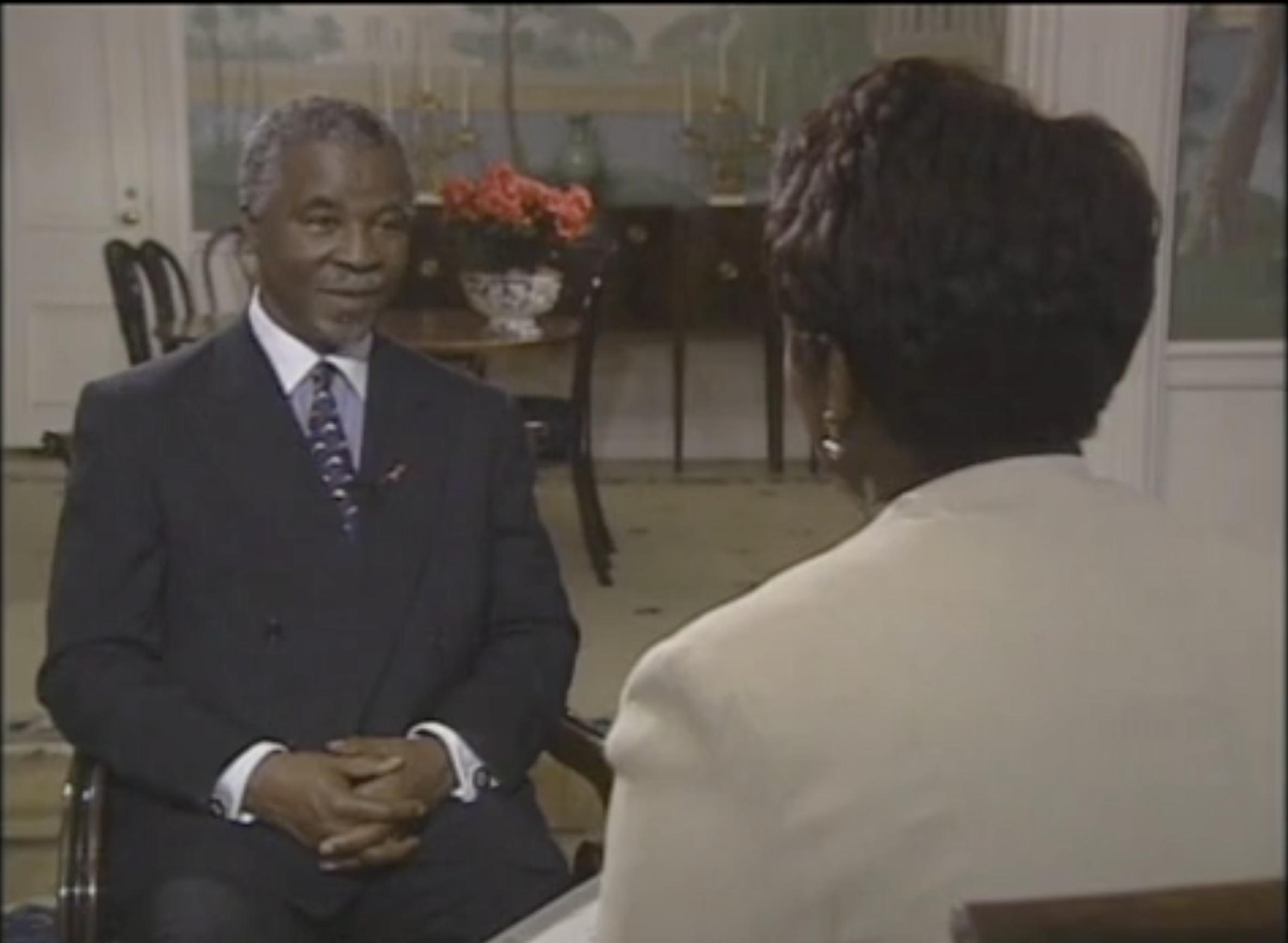 |
Many resented Mbeki for not taking action to reduce the price of HIV drugs due to his stance on the cause of the disease. As a result, according to journalist and AIDS activist Emily Bass, “around the world, concerned allies made common cause”105 using research and action plans to criticize Mbeki ahead of the 2000 International AIDS Conference in Durban, South Africa – the first to be held on the continent.
The documentary State of Denial (dir. Elaine Epstein, Lovett Productions, 2003; airing on POV September 3, 2003), explained how the history of South Africa’s apartheid state contributed to the spread of the disease. Filmed primarily during 2000 in Durban, Johannesburg, Cape Town, and their surrounding areas, the documentary related that high taxes imposed on black South Africans prompted men to seek work in the mines, where they spent most of the year away from their families, leading to a high demand for sex work. The film also focused on Mbeki’s attitude as a main cause for the scale of the disease and included interviews with doctors, patients, activists, and political officials, accompanied by statistics.
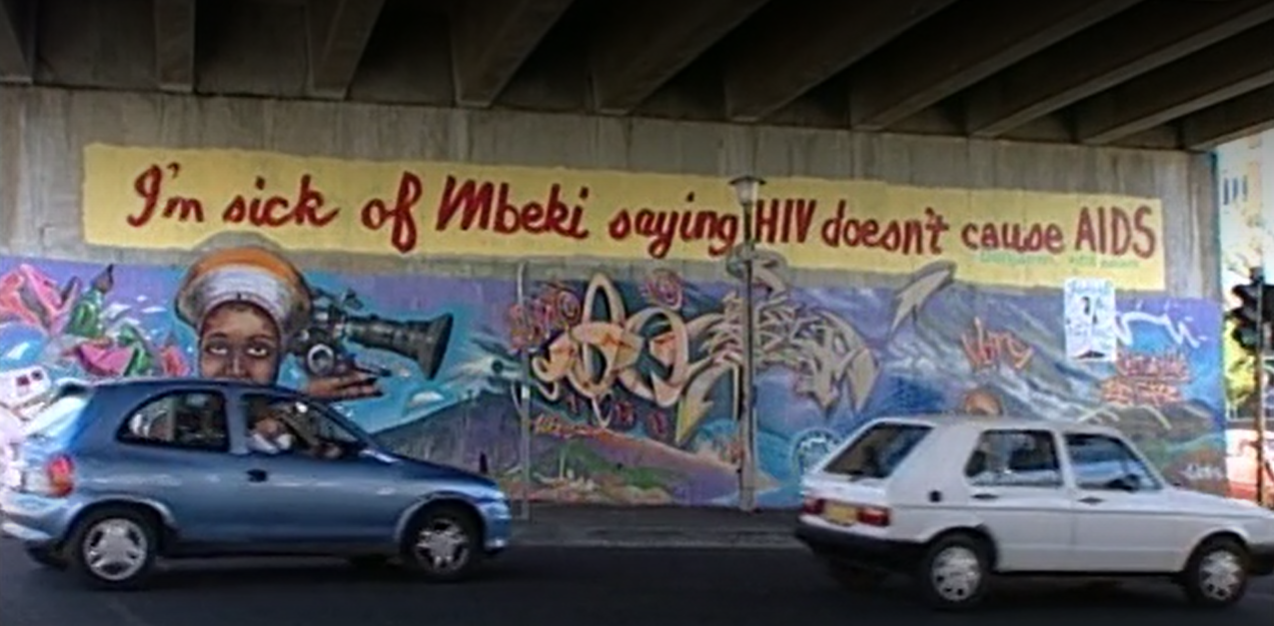 |
State of Denial followed the challenges faced by the Treatment Action Campaign (TAC), founded in 1998 by South African HIV-positive activist Zackie Achmat, whose perspective played a notable role in the documentary. He stated that he created TAC because there were not enough people who understood the issue well enough to address it. He identified TAC’s two primary objectives as securing medications for anyone with HIV and spreading public awareness of the difficulty of obtaining drugs. Achmat himself opted not to take ARVs until they were available to the public. Among other acts of civil disobedience, TAC violated patent laws by bringing an affordable, generic version of the AIDS treatment Diflucan into the country. Pharmaceutical companies had previously viewed South African HIV patients as ideal candidates for clinical trials, which became one of the only ways they could seek treatment. Eventually, due to mounting pressure from activists, the American drug company Pfizer decided in 2000 to donate Diflucan to South Africa for two years, leaving doctors, patients, and activists to wonder what would happen after the period ended. Mbeki’s administration declined an offer for a five-year donation from the manufacturer of Nevirapine, a drug used to prevent mother-to-child transmission. In response, TAC initiated litigation against the South African government and won, requiring state hospitals and clinics to provide the drug to pregnant women.
In addition to the clash between Mbeki’s administration, scientists, and activists, the film told the stories of ordinary HIV-positive citizens. Children witnessed their parents die and struggled to keep up with their education. Parents worried about passing HIV onto their children and sought treatment for them through drug trials. Young people attended support groups to cope with the shame. One of the families the film followed was white. Both parents were HIV-positive and could not afford ARVs.
Some of the film’s subjects passed away before its completion and were memorialized in the film’s end credits. A POV interview about the film with director Elaine Epstein is available online.
South African human rights lawyer Edwin Cameron, a Supreme Court of Appeal Judge, offered a nuanced view of President Mbeki related to South Africa’s “racist and colonial past.” He stated in a later NewsHour interview that because of the nation’s new democratic institutions, including the media’s criticism of the president’s stance, Mbeki finally adopted a national treatment policy. Cameron’s book, Witness to AIDS, discussed his decision to go public about having AIDS. Cameron, whom Nelson Mandela characterized as one of South Africa’s new heroes, wrote the book to address the fact that the stigma attached to AIDS – because it is a sexually transmitted disease – had kept many people from seeking treatment.106
During the 2000 International AIDS Conference in Durban, South Africa, U.S. Ambassador to the UN Richard Holbrooke, in a NewsHour interview with Gwen Ifill, reiterated his characterization of AIDS as “the number one issue in the world.” He stated that “its potential to destroy economic achievement, undermine social stability and create more political uncertainty and the inability of the rest of the world to contain it on only one continent, because it can’t be sealed off in Africa – it’s already spreading elsewhere in the world, particularly the subcontinent of India and Pakistan – is so enormous.” Holbrooke praised the NewsHour and 60 Minutes for “finally paying attention to this” and asserted that media attention is “the key to breaking through on this issue.”
Also during the 2000 Conference, WNYC’s series On the Line interviewed conference attendee Dr. Seth Berkley about the advancement of AIDS vaccines for the strain of the virus circulating in Africa, based on previous findings of cellular immunity in Kenyan sex workers. A vaccine designed to treat patients in the U.S. and Europe may not work on patients in Africa, Dr. Berkley explained. He voiced concerns that even if scientists did develop a vaccine that worked in Africa, pharmaceutical companies would have little incentive to manufacture it and there would be no way to distribute it, but he also expressed hope. “The goal at the end is to make sure we have a vaccine that works in every part of the world,” he said. “And that's why the International AIDS Vaccine Initiative was formed to try to really make this happen.” Founded in 1996 by Dr. Berkley, the International AIDS Vaccine Initiative is a nonprofit partnership between public and private entities that is still active today.107
Howard University's Andrew Rankin Memorial Chapel hosted a meeting with several international speakers, including President Clinton, on December 1, 2000, World AIDS Day, which WHUT recorded. During his speech, Clinton discussed the importance of faith-based organizations and the role of wealthier countries in fighting the AIDS pandemic.
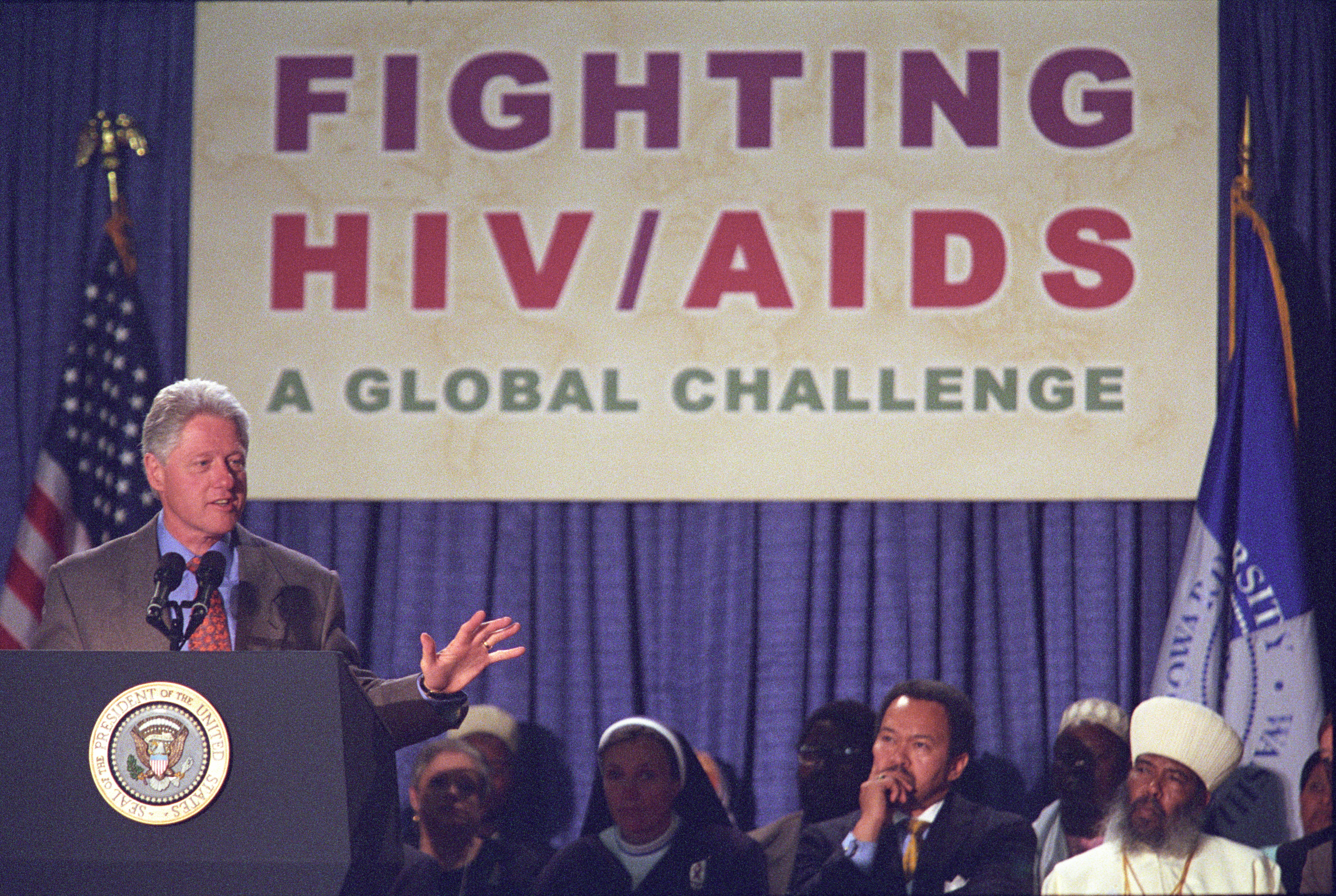 |
In April 2001, a day before African leaders gathered in Nigeria to confer about AIDS, the NewsHour aired a report by correspondent Elizabeth Farnsworth from Malawi, where one million people out a population of ten million, were living with HIV. During the next month, the NewsHour aired a four-part series by Farnsworth about AIDS in Africa, with a concentration on Malawi and Botswana, where she provided an in-depth look at the lives of those fighting AIDS on the ground. The first report began with Farnsworth telling the audience, “It’s hard to grasp the scope of the AIDS catastrophe engulfing southern Africa until you see it up close.” The segment included interviews with doctors, healthcare volunteers, patients, and the vice president of Malawi, Justin Malewezi. It also contained footage of the rural landscapes and impoverished communities of Malawi and Botswana. “There has often been hunger here, and life expectancy has always been low. But villagers said they have never seen anything more devastating than AIDS,” Farnsworth reported. “To serve all the people who need help, the vice president says a huge flow of aid from outside will be necessary.” Through the stories of individuals, Farnsworth’s interviews helped convey the bleak outlook held by Malawians who would continue to experience frustration and fear as long as they lacked access to treatment.
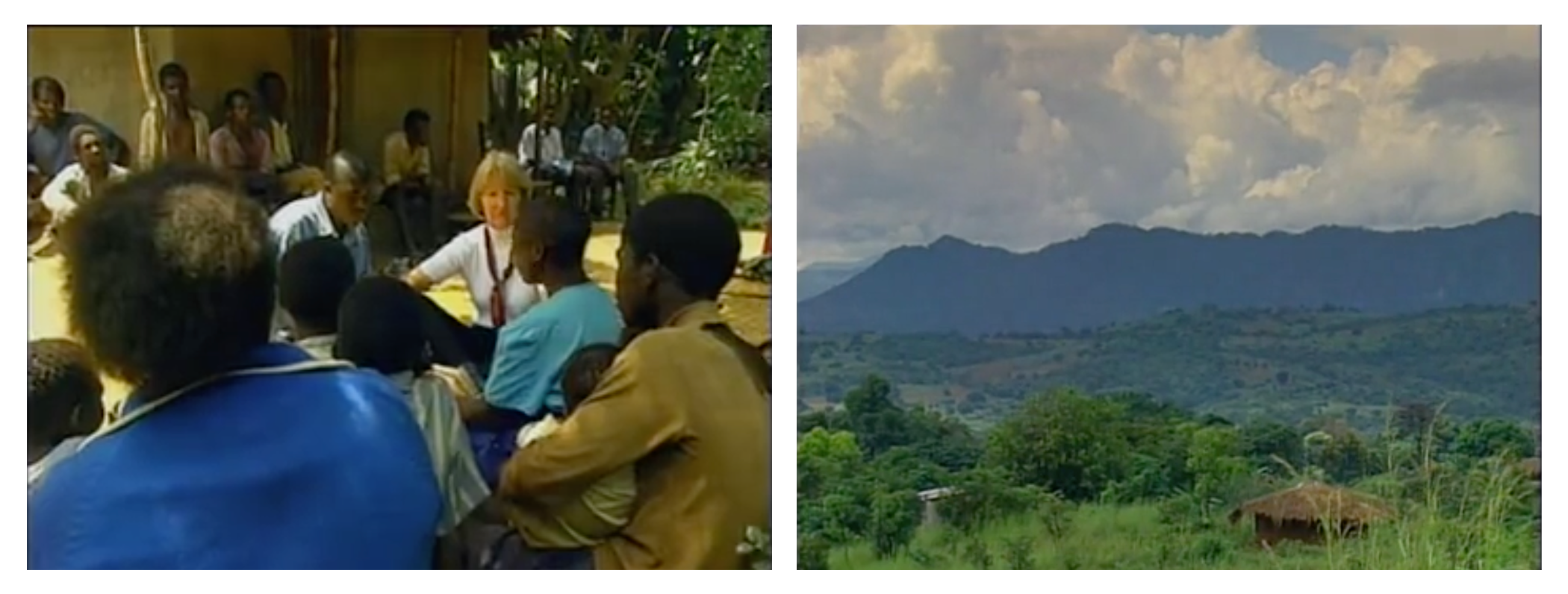 |
Farnsworth’s report from Botswana opened with the funeral of a person who had died from AIDS. “We’ve come to Francistown to answer basic questions about Africa’s AIDS epidemic,” she explained, directly addressing the audience. “The mounds of earth in this cemetery cover the young, who died at an age when they should begin to really live. Why? What’s being done about it, and what can the rest of the world do to help?”
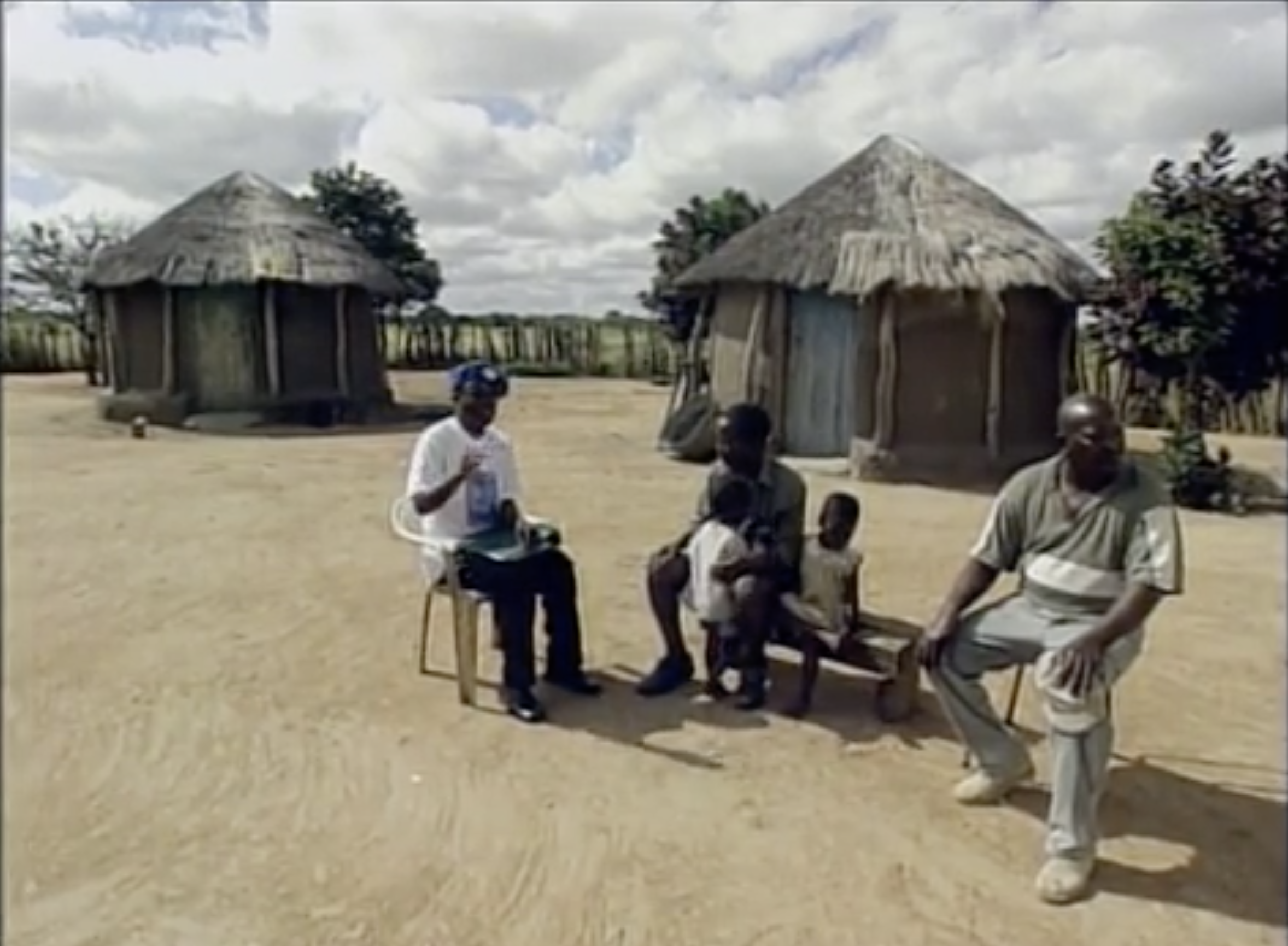 |
Before the last report of Farnsworth’s series, the NewsHour also aired one segment by Fred de Sam Lazaro about AIDS in Senegal. De Sam Lazaro detailed the country’s relatively successful techniques of preventing the disease through government programs, including one that required registration and regular screening for sex workers that had been in place even before the AIDS pandemic. Compared with other African countries with infection rates of at least 30%, Senegal’s was only 1.4%. Still, experts remained concerned about rural areas and emphasized the role of religious leaders in preventing AIDS by encouraging fidelity and educational campaigns to spread awareness in local communities.
The NewsHour covered a special UN session in June 2001, where several countries – including Nigeria, Botswana, St. Kitts and Nevis, Thailand, and Brazil – sent state representatives to speak about possible solutions and appeal for assistance from other nations. During the conference, Prime Minister of St. Kitts and Nevis Dr. Denzil Douglas said, “Donor countries generally must come forward in order to assist us in the Caribbean if we are to survive.” The segment covering the UN session on AIDS quickly pointed out the absence of South African president Mbeki.
The NewsHour’s coverage of global AIDS in 2001 concluded with an update recognizing World AIDS Day and discussing the state of the pandemic in Africa, Eastern Europe, and Southeast Asia.
Reporter Jonathan Silvers covered AIDS in Zambia in May 2002, specifically the disease’s effects on orphaned children. He interviewed several Zambian community members who expressed concerns about what would happen to children who had lost their parents or grandparents. Though the country’s cultural traditions encouraged communities to care for orphans, the segment featured some who supported themselves after their communities rejected them, due to the stigma surrounding their parents’ deaths. “The task of aiding orphans and vulnerable children has fallen on charities and nongovernmental organizations,” Silvers reported. At the end of the segment, Jim Lehrer stated that the UN hoped to form a plan to alleviate the effects of AIDS on children.
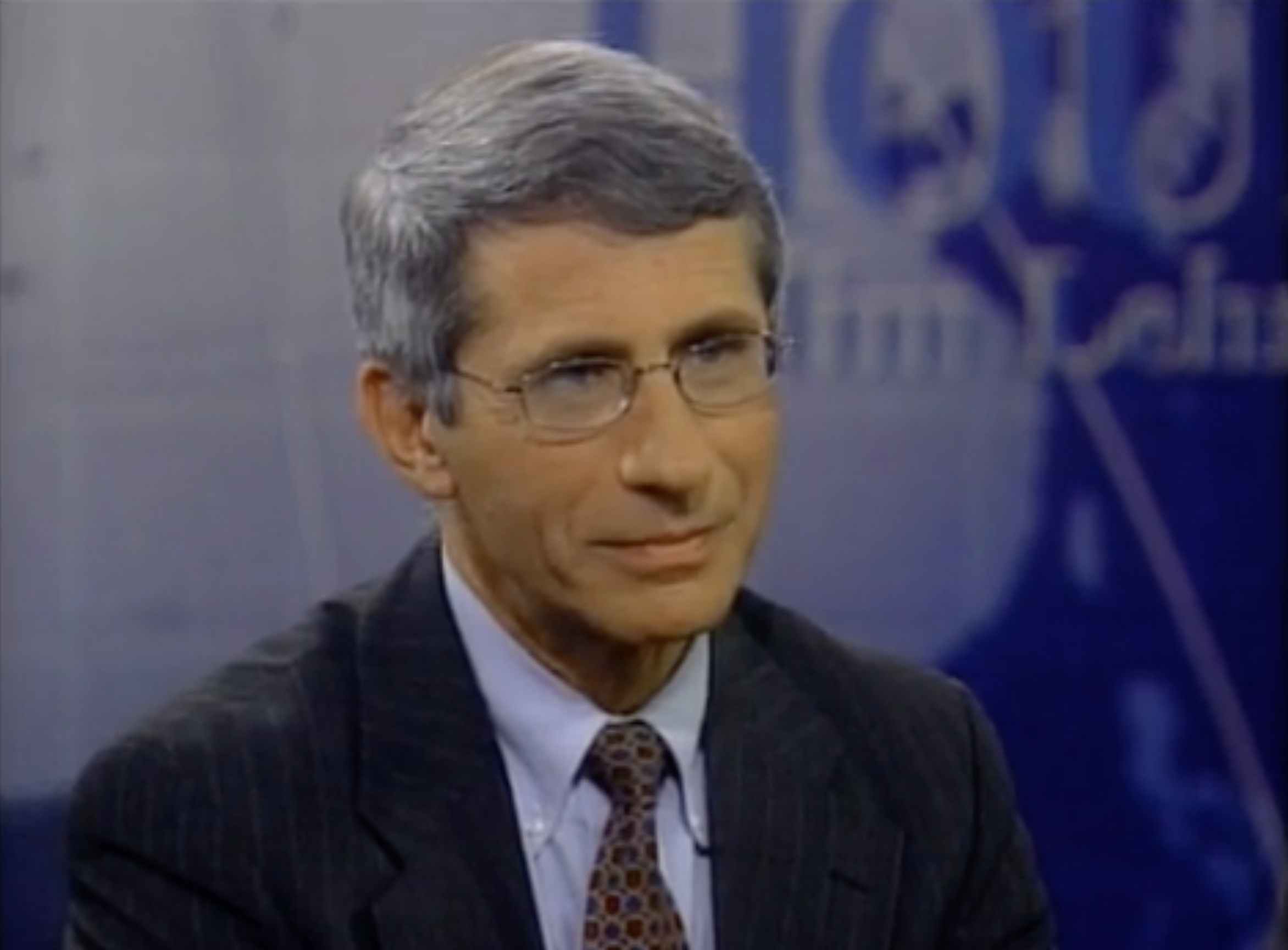 |
In much of the coverage, reporters repeatedly asked medical professionals whether treatments, such as ARVs, or preventive measures, such as condoms, education, and, now, vaccines, were the more effective strategy for slowing the spread of HIV. Dr. Anthony Fauci, director of the National Institute of Allergy and Infectious Diseases, appeared on The NewsHour with Jim Lehrer in June, following the launch of a $500 million program to fight AIDS by President George W. Bush. Gwen Ifill asked Dr. Fauci, “Why the focus on mother-child transmission rather than adult-to-adult transmission?” He responded, “It's treating the mother to be able to block transmission to the baby. So it's a combination of a treatment program, [and] its end effect is actually prevention.”
During the International AIDS Conference of 2002, NewsHour health news correspondent Susan Dentzer reported that experts believed the pandemic was only in its earliest stages and that the worst of it was yet to come. About a month later, following the United Nations Earth Summit in Johannesburg, Jonathan Silvers covered how AIDS exacerbated the effects of drought and famine in Malawi. The segment explained how scarcity led to a breakdown of family support, destabilizing entire communities and the country itself. Women widowed by AIDS experienced dispossession, or “property-grabbing,” wherein their husband’s relatives would not recognize them as family, stripping the women of their property and other resources. Dispossession occurred much less frequently before the pandemic.
U.S. national security concerns heightened in the aftermath of 9/11. In October 2002, The NewsHour with Jim Lehrer aired a segment responding to a CIA report discussing AIDS in the context of international security – specifically in China, India, Russia, Nigeria, and Ethiopia – instead of as a humanitarian crisis. “The five countries have weak healthcare systems to combat the disease,” correspondent Ray Suarez stated in the segment. “The report follows a similar warning two years ago, when the Clinton administration first called the global epidemic a national security threat, adding AIDS to a list that includes terrorism and nuclear weapons.”
In his 2003 State of the Union address, President Bush announced the President’s Emergency Plan for AIDS Relief (PEPFAR), an initiative that began as a $15 billion investment over five years and has since grown to nearly $100 billion dollars. PEPFAR eventually would save 21 million lives across more than 50 countries, mainly in Africa.108 With this announcement, U.S. officials continued to present the AIDS pandemic as both a moral and strategic concern. Emily Bass has written, “[Bush’s] words ended years of American negligence…. He also brought to an end an era of shameful American heel-dragging over whether people in Africa living with HIV and dying of AIDS deserved access to the medications that had changed HIV from a death sentence to a chronic disease in people who could afford them.”109 In his address, President Bush called PEPFAR a “work of mercy,”110 and in May 2003, Senator Bill Frist, a physician, in a segment of The NewsHour with Jim Lehrer stated, “I give the credit to the president because it was in the State of the Union message that he laid it out, and Congress has appropriately followed.” When asked, “Where does AIDS in Africa and the Caribbean fit into U.S. priorities?” the senator responded: “It is a main priority. It shows that the United States is a caring nation, a compassionate nation.” Public broadcasting also covered President Bush’s visit to Africa in July 2003 in a segment that acknowledged his administration’s changed attitude towards the continent since his presidential campaign, when he stated that the Africa did not fit into U.S. strategic interests.
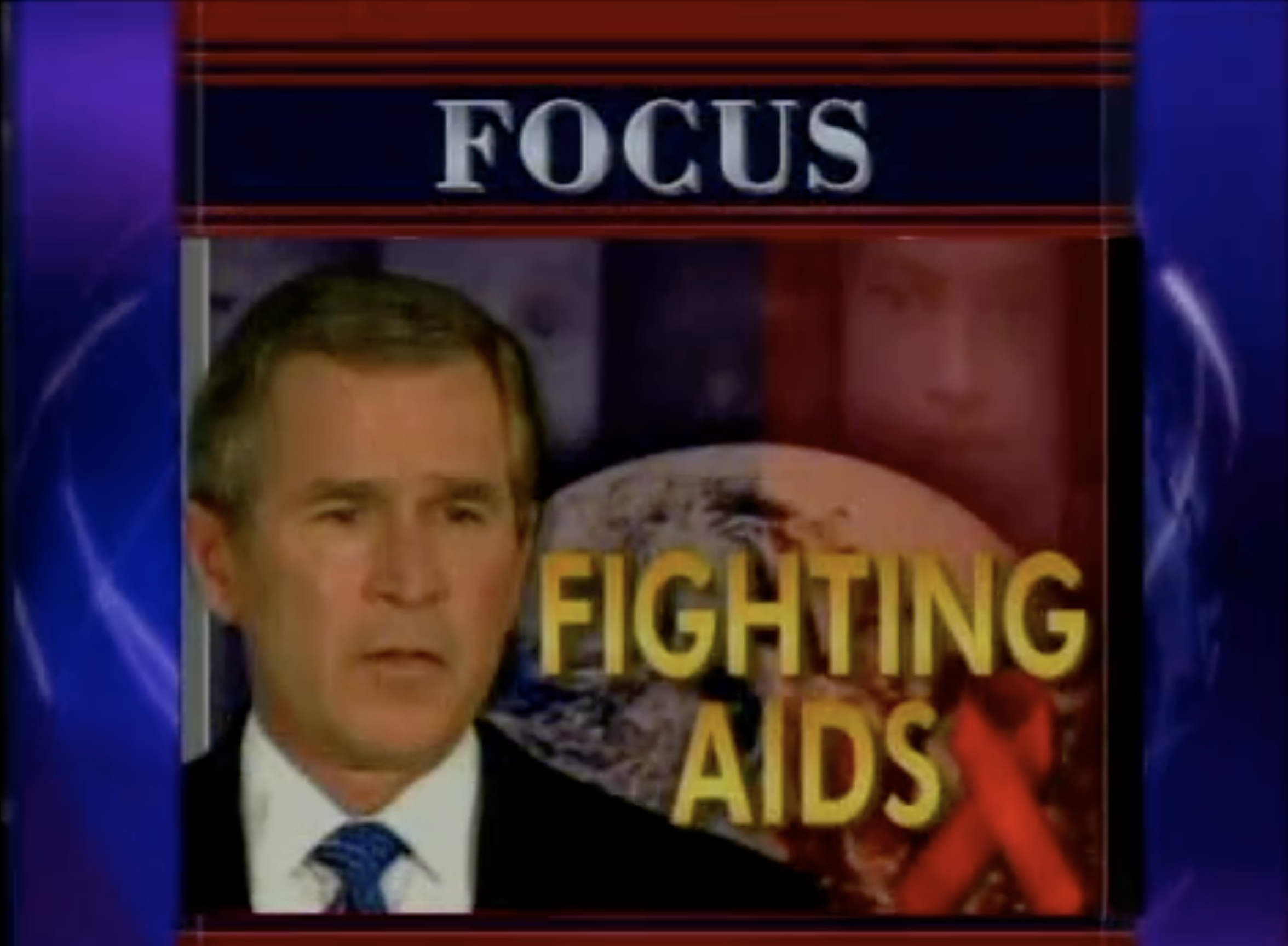 |
On World AIDS Day in 2003, The NewsHour with Jim Lehrer aired a segment discussing the 3 by 5 Initiative, a goal set by the WHO to provide 3 million people with treatment by 2005. Later that December, WILL Illinois Public Media’s radio call-in program Focus 580 aired an episode called “The Worldwide HIV/AIDS Pandemic,” in which Dr. Thomas C. Quinn of Johns Hopkins University’s School of Medicine spoke about studies he conducted in Africa regarding viral load, heterosexual transmission, and sexually transmitted diseases. He emphasized the importance of safe sex in preventing the spread of AIDS. “While we say the viral levels are the most predictive of transmission, the factors that enhance transmissibility are sexually transmitted diseases,” Dr. Quinn said. “Right now I'm just frustrated that I don't have the drugs to treat my African patients the way I do for my Baltimore patients.”
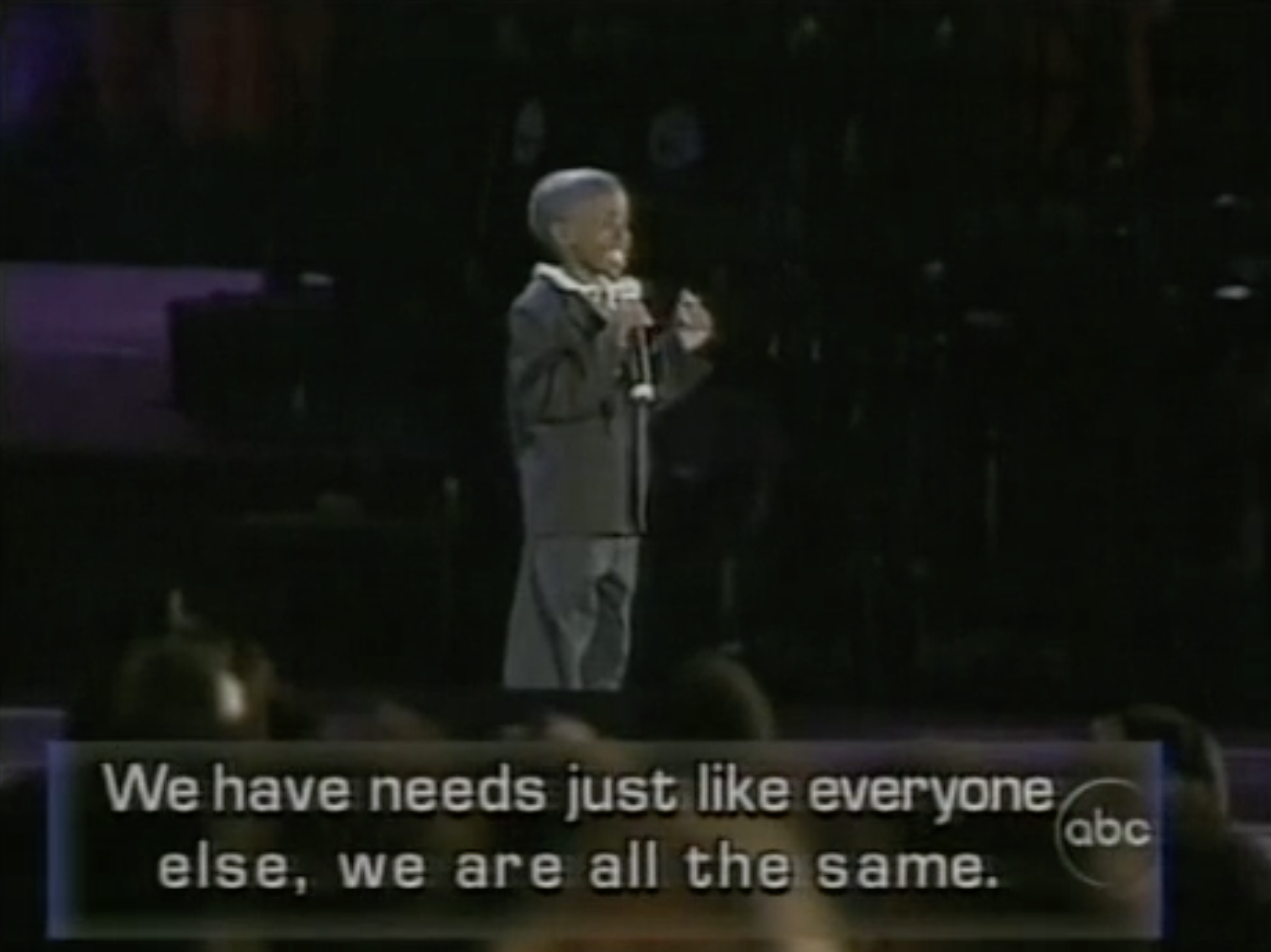 |
In the context of increased global initiatives in the early 2000s, including 3 by 5 and PEPFAR, medical professionals began to comment more on other regions of the world in addition to Africa when they appeared on public broadcasting. After the 2004 International AIDS Conference in Bangkok, the NewsHour interviewed Dr. Fauci again along with Dr. Helene Gayle of the Bill and Melinda Gates Foundation. This time, he stated, “Sooner or later, what's happened in Africa almost certainly is going to happen in some of the major Asian countries, namely spread into the general population through heterosexual contact.”
On World AIDS Day in 2004, the NewsHour aired a segment detailing the effects of the disease on women and girls. The segment also featured the story of a South African boy named Nkosi Johnson, who died of AIDS at the age of 12, and an interview with Jim Wooten, the author of a book about Johnson’s impact, titled We Are All the Same. Wooten stated that he tried to put a human face to the pandemic amongst the countless statistics circulating at the same time.
Public broadcasting continued to cover those fighting AIDS in African communities. In 2005, a Focus 580 episode called "Missionary Doctoring in Africa" covered the experience of Dr. Susan Nagele, a Catholic missionary who lived and worked in Tanzania, Sudan, and Kenya. She provided a more faith-based account of what it meant to alleviate the effects of the disease in Africa. The host raised the issue of the Catholic Church generally being unsupportive of contraception, such as condoms. In response, Dr. Nagele cited instances where condom use is not possible, including rape and war. Her interview was part of an ongoing conversation about the fact that a Republican president, much of whose constituency was Christian, had proposed an initiative that potentially encouraged family planning and that faith-based organizations had taken on some of the responsibility for global AIDS relief.111
By the end of the year, scientists and journalists alike looked for results. On World AIDS Day in 2005, former UN Envoy for HIV/AIDS in Africa Stephen Lewis and human rights leader Salih Booker spoke on a segment of The NewsHour with Jim Lehrer, acknowledging that the 3 by 5 Initiative had not met its goal and citing lack of infrastructure as a primary obstacle in delivering treatment to African countries. “The fact that we were only able to achieve one million out of the three target is deeply concerning,” Booker stated. In the segment, reporter Jeffrey Brown asked Booker, “Is it a glass half full – half empty type of thing for telling the public, all of us, what is going on?” Booker replied, “Well, it's certainly half full, maybe a tenth full…. We have momentum, but it's just not fast enough; the progress is just not fast enough.”
2005-Present: The Fight Continues
After 2005, the frequency of NewsHour segments about the AIDS pandemic in Africa declined. There was little to no coverage from 2006. Public broadcasting from that year devoted much of its global news coverage to events in the Middle East, including Iraq, Iran, and Lebanon, as the Bush administration continued the post-9/11 War on Terror.112
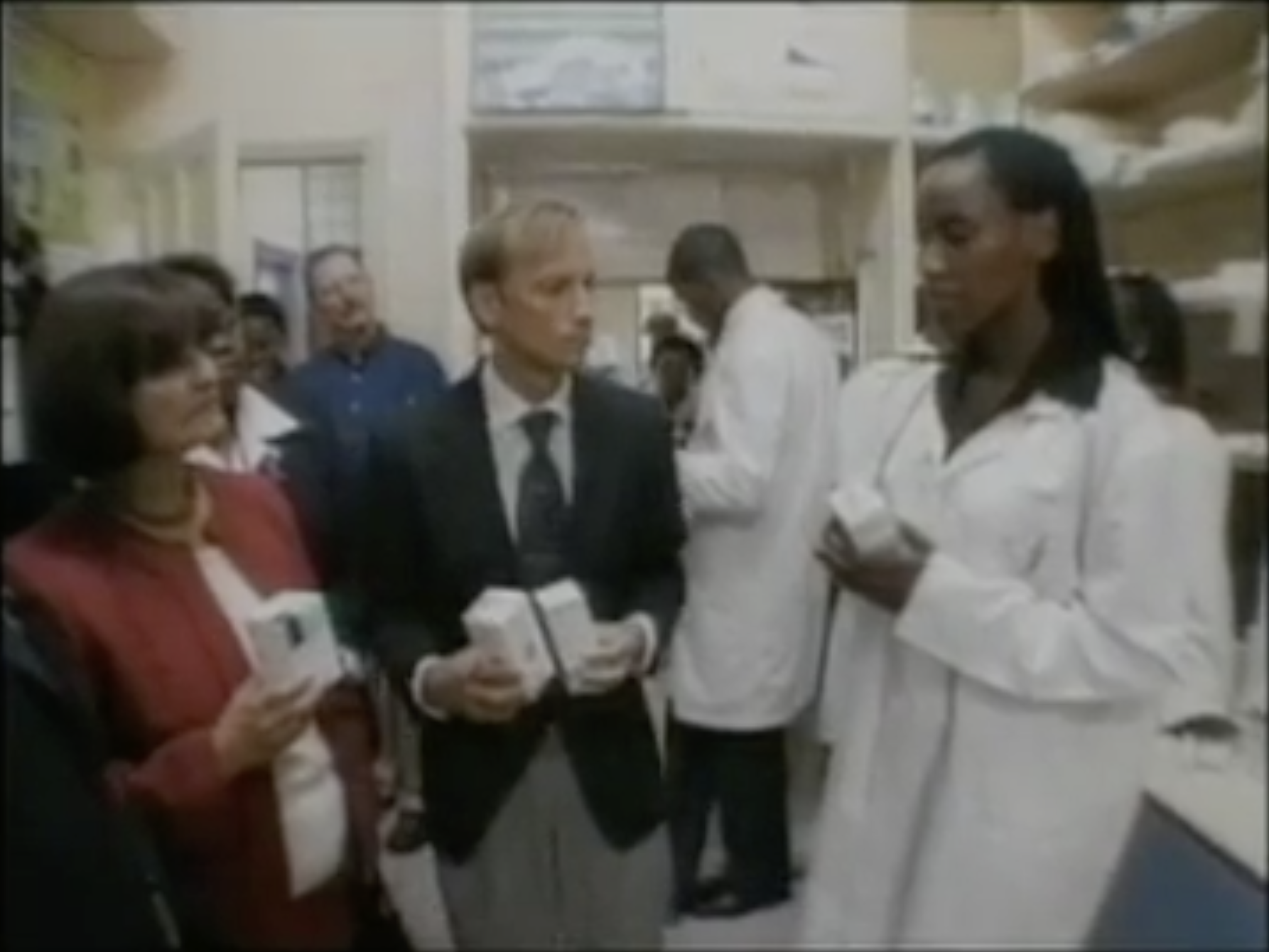 |
In 2007, as PEPFAR entered its fourth year, coverage focused on gauging its effectiveness. In February, The NewsHour with Jim Lehrer aired an update on AIDS in South Africa, where cases were still rising rapidly. U.S. Global AIDS Coordinator Mark Dybul gave a speech to the Commonwealth Club of California about the progress of PEPFAR in Africa in May. That November, The NewsHour aired a two-part report by health news correspondent Susan Dentzer about AIDS in Rwanda. Dentzer discussed the pandemic in a post-genocide context, as well as the implementation of PEPFAR.
She noted previously stated concerns about the program that, aside from cost and infrastructure, “Africans in particular couldn’t follow complex treatment regimens” and that “high-cost anti-AIDS drugs would be stolen or diverted.” Dybul, interviewed in the segment, stated that these were no longer major concerns.
As the new decade began, the AIDS pandemic in Africa continued to receive less coverage from the news media. In 2010, WGBH invited Unity Dow and Max Essex, authors of Saturday Is for Funerals, to speak about their new book at the Harvard Bookstore. Saturday Is for Funerals details the effects of AIDS in Dow’s home country, Botswana, telling the stories of real people while also explaining scientific developments.
The PBS NewsHour aired updates about AIDS from time to time. Experts debated ways to apply successful methods of treatment and prevention in areas in need, as well as the funding required to implement such methods. In 2009, the Obama administration rebranded and expanded PEPFAR as the Global Health Initiative (GHI). Emily Bass has written that, despite flat funding, PEPFAR “exceeded the 6 million treatment target, reaching a cumulative total of 6.7 million people on antiretrovirals as a result of PEPFAR support. This was a fourfold increase from the figure at the start of the Obama administration.”113
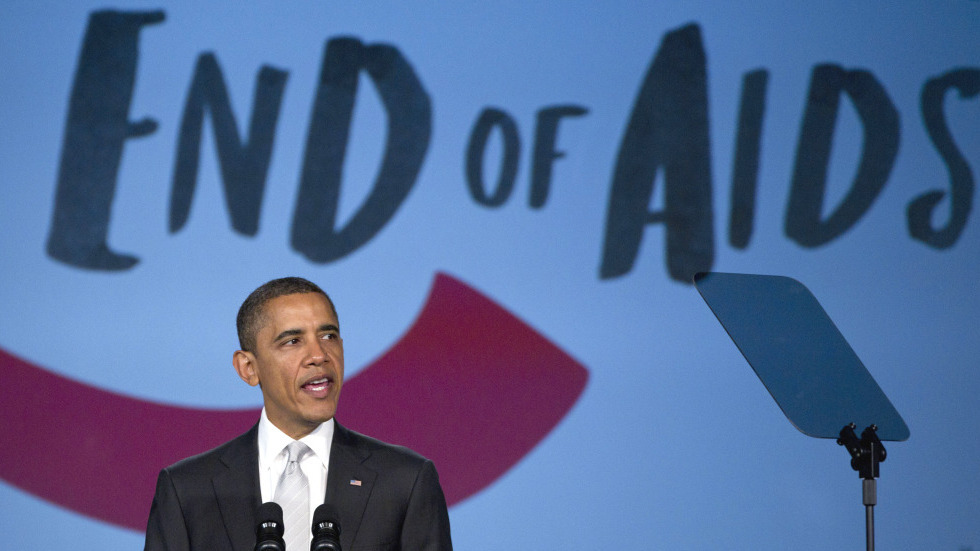 |
Two years later, officials were still concerned about the state of the pandemic within the U.S., and the NewsHour covered Obama’s announcement of a $50 million initiative toward fighting AIDS domestically. Obama also called for PEPFAR to fund the distribution of ARVs to two million more people globally by 2013, despite a decision by the Global Fund to Fight AIDS, Tuberculosis, and Malaria to halt any new grants until 2014 due to the financial crisis at the time.114
Complementing its coverage of large-scale global initiatives, a 2011 PBS NewsHour segment focused on a local community effort to spread AIDS awareness through imams in Morocco, a predominantly Muslim country. Ray Suarez reported that Morocco’s “unique combination of public health and religion” served as a model for encouraging sexual education and HIV/AIDS prevention in other Muslim countries, where conservative beliefs often inhibited open conversations about the disease. The segment echoed Fred de Sam Lazaro’s 2001 report about Senegal, another predominantly Muslim country that achieved relatively successful results by working with the government to prevent the spread of HIV through religious principles like fidelity and male circumcision, both mandated by Islam.
Ahead of the 2012 International AIDS Conference, Executive Director of UNAIDS Michel Sidibe appeared on a segment of the PBS NewsHour and expressed guarded optimism, pointing out that many countries had successfully begun to fund their own AIDS response instead of waiting for foreign aid. “We are seeing President Obama’s full commitment to make sure that we can come with a new narrative which is about sharing responsibility, making sure that we can sustain our gain, and that it is also starting to pay off,” Sidibe stated.
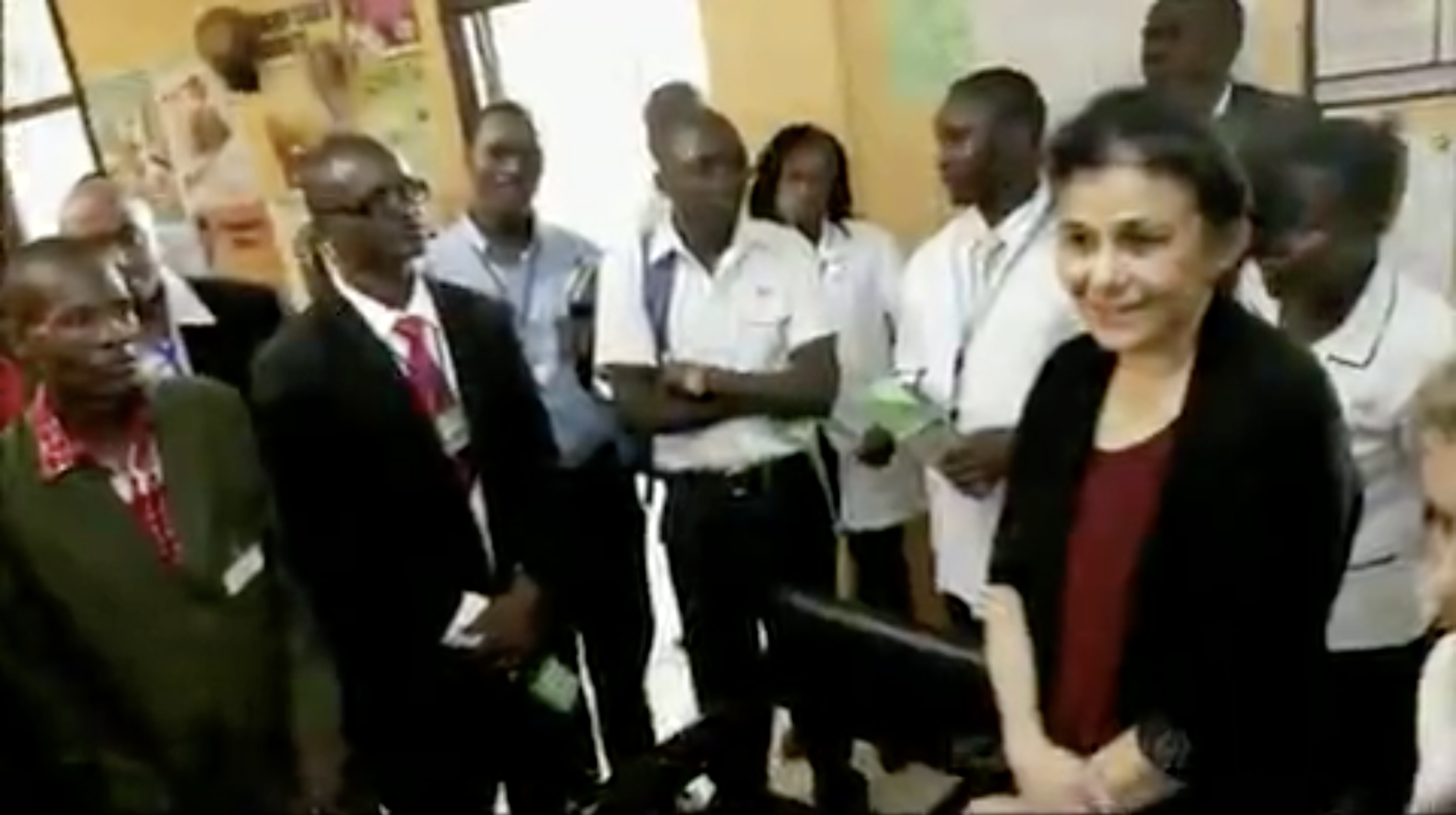 |
In the same segment, Columbia University’s Dr. Wafaa El-Sadr spoke about applying certain lessons from the response in Africa to the U.S. “I realize sometimes when we say that the epidemic in parts of the United States is similar to epidemics in parts of Africa, that is quite an alarming and maybe disturbing statement to many, but it’s true,” she said, suggesting that a PEPFAR-style outreach could help communities in the U.S. This exchange of ideas for preventing the spread of HIV not only had national security benefits for the U.S. but contributed to scientific advancements as well.
In 2013, doctors in Mississippi made a breakthrough discovery when they cured a previously HIV-positive infant of the virus. WGBH aired a segment on The World, interviewing doctors about how that discovery could be applied in Africa. The program included Dr. Donald Thea, the principal investigator of a Boston University project focusing on preventing mother-to-child transmission in Zambia.
The response to AIDS in Rwanda received coverage for being particularly successful. Although the 1994 genocide disrupted the country’s previous plan to fight AIDS, high percentages of HIV-positive Rwandans now had access to treatments. A July 2016 PBS NewsHour series titled “The End of AIDS” included a segment that focused on how to ensure patients in Rwanda would continue to take their medicine. On World AIDS Day that year, the NewsHour provided a broader update about ongoing successes and obstacles.
In 2018, the NewsHour covered the “Baby Shower” program in Nigeria, aimed at preventing mother-to-child transmission by encouraging women to get tested for HIV. Like the outreach program through imams in Morocco, “Baby Shower” targeted a specific population in order to achieve an impact. While the stigma around AIDS is declining, however, shame and low testing rates continue to be problems in both the U.S. and in African countries.
Shortly before the start of the COVID-19 pandemic, the NewsHour aired a segment on World AIDS Day in 2019. It included an interview with Celeste Watkins-Hayes, a professor at Northwestern University. “It’s important to understand that, while HIV can affect any of us, it disproportionately affects those who are grappling with other injuries of inequality,” she stated, citing limited access to healthcare as a major risk factor for marginalized communities. According to Watkins-Hayes, having a support system for these communities “provides an on-ramp to political and civic engagement” and continues the legacy of previous activists. She also emphasized the importance of economic sustainability in providing treatment and financial assistance.
During the final years of Obama’s second term, coverage of health crises in Africa turned to the Ebola outbreak in West Africa and its transmission to the U.S., and beginning in 2020, the COVID-19 pandemic largely overshadowed all other news coverage of health issues. PEPFAR continued to be funded through Obama’s tenure and into the Trump administration, though the amount of funding fluctuated between fiscal years. In December 2018, President Trump signed the PEPFAR Extension Act, “reauthorizing PEPFAR for another five years and $48 million,” Emily Bass reported. “He’d done so even as he derided foreign aid, African countries, the State Department, and America’s role as a global citizen,”115 she stated.
The PBS NewsHour aired a segment about AIDS in Haiti in 2019, around the ninth anniversary of the 2010 earthquake that had set back Haiti’s gains in fighting AIDS. The segment contained interviews with Dr. Jean William Pape, winner of a Clinton Global Citizen award, who founded GHESKIO in 1982, a French acronym for the Haitian Group for the Study of Kaposi Sarcoma and Opportunistic Infections (before the term “AIDS” was coined). GHESKIO continues to be implemented in Haiti, which PEPFAR also supports. Referencing prejudiced statements previously made by Trump about Haitian and Nigerian immigrants, however, reporter Ivette Feliciano stated, “Despite all of GHESKIO’s success, Pape believes decades of stigma regarding Haiti’s history of AIDS and poverty harms the country, and that stigma may soon begin to affect U.S. foreign aid to Haiti.”
In November 2020, executive director of the Global Fund Peter Sands wrote an article discussing the global responses to the COVID-19 and AIDS pandemics and the attitudes of donor countries. “Once diseases no longer threaten those living in the wealthiest countries, they are reclassified as development or humanitarian issues, rather than being considered as global health security threats. That reclassification means they attract a fraction of the resources,” Sands stated. “Will we allow COVID-19 [to] become, like we did with HIV, TB and malaria, another lingering ‘residual pandemic’ we care much less about because it only kills the poor?” he asked. He pointed out that “the capabilities and infrastructure we need to prevent future threats are largely the same as those we need to defeat existing diseases. Most low- and middle-income countries based their COVID-19 responses on the laboratory, disease surveillance, community networks and supply chains that were created to fight HIV, TB and malaria.”116 The COVID-19 pandemic, which, like AIDS, is far from over, prompted experts to reconsider the costs of mishandled or inadequate responses to global heath crises.
The year 2021 marked 40 years since the first notice in the scientific community of what later became known as AIDS. In June of that year, the CDC published a reflection, stating, “The epicenter of the pandemic remains in East and southern Africa, which account for 54% of all HIV-infected persons and 43% of incident HIV infections and deaths.”117 Because AIDS is still a major threat to public health in Africa today and will continue to put a strain on subsequent generations, organizations like UNAIDS, the Global Fund, and the U.S. Department of State continue to publish regular documentation on the pandemic.
In October 2022, UNAIDS and its partner organizations held an emergency meeting in South Africa after finding that there were 1.5 million new HIV infections worldwide in 2021, 1 million more than the 2020 target. Participants met “to establish why they are failing to decline at scale, to discuss solutions and to help countries set ambitious prevention targets,” according to a UNAIDS press release.118
